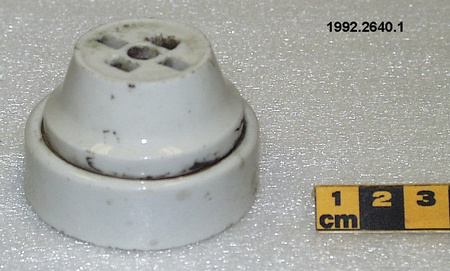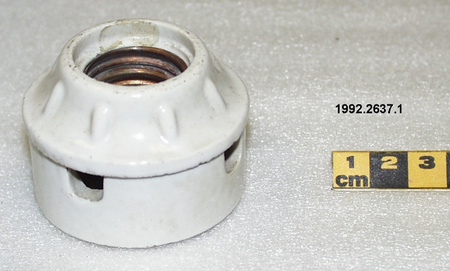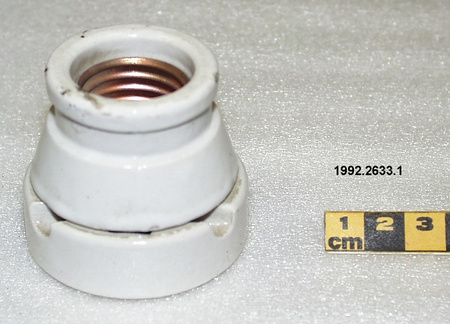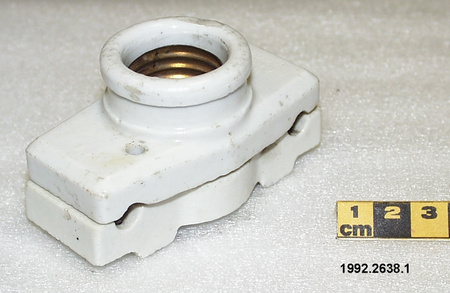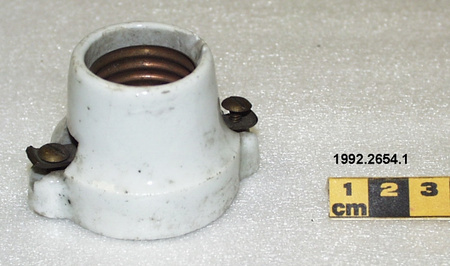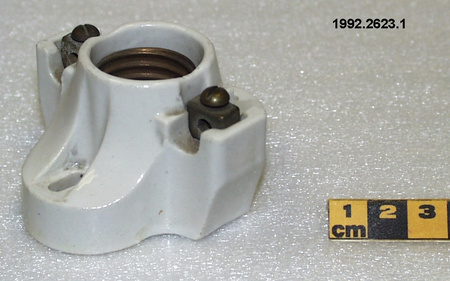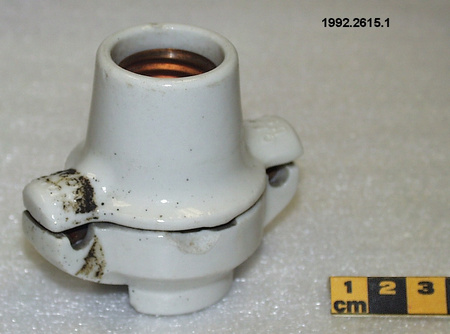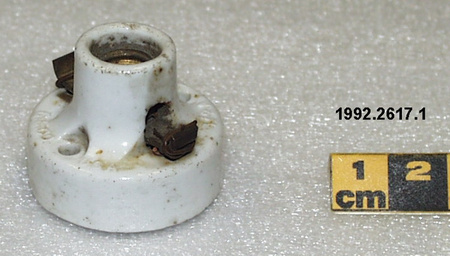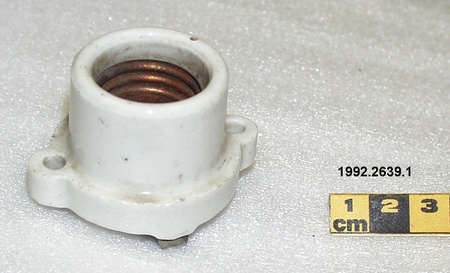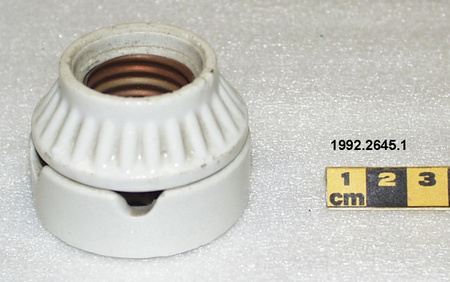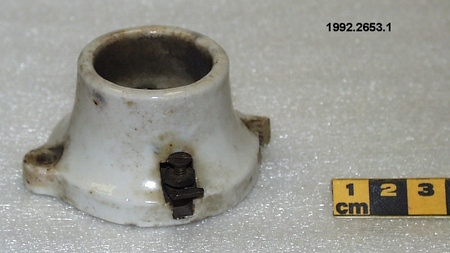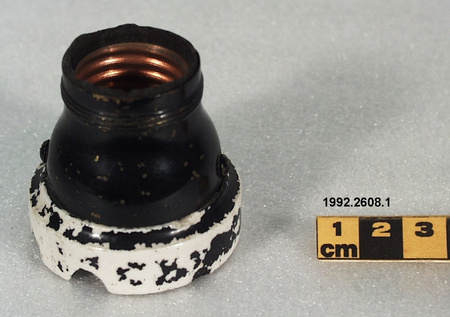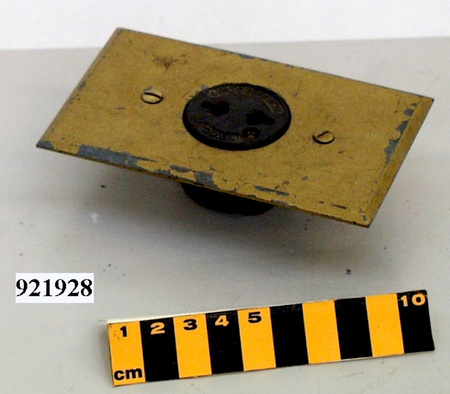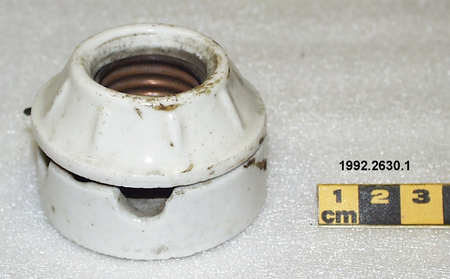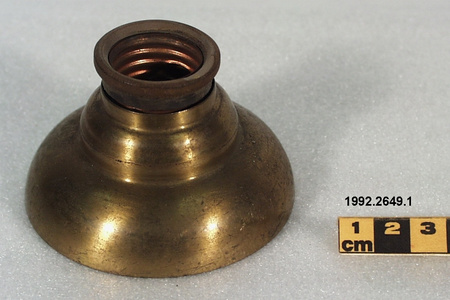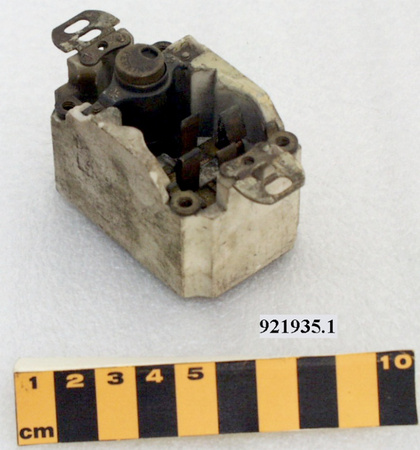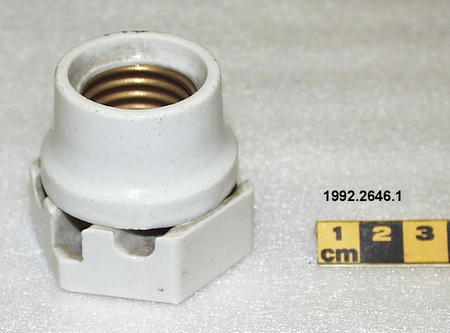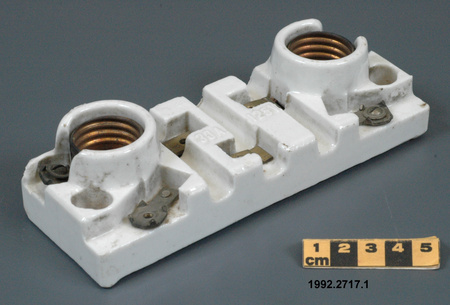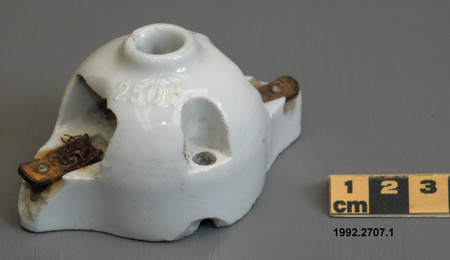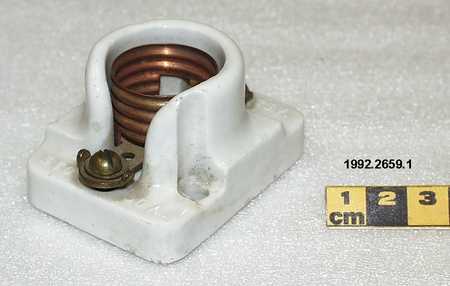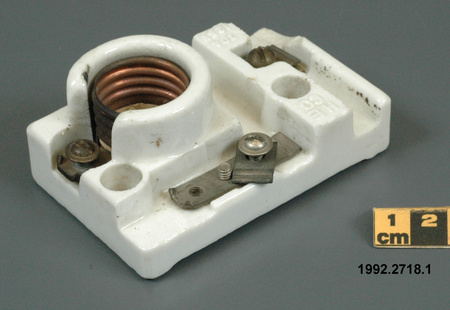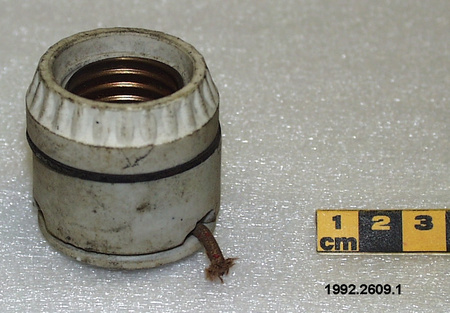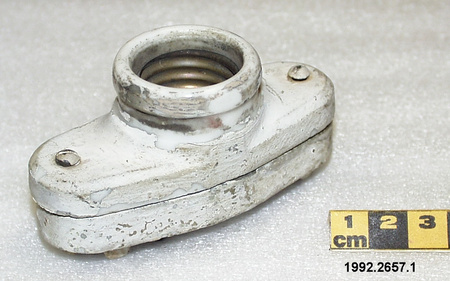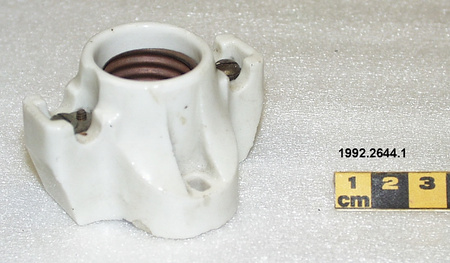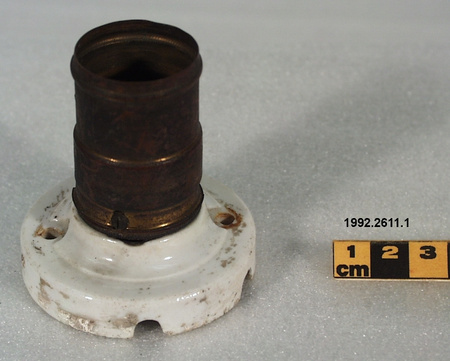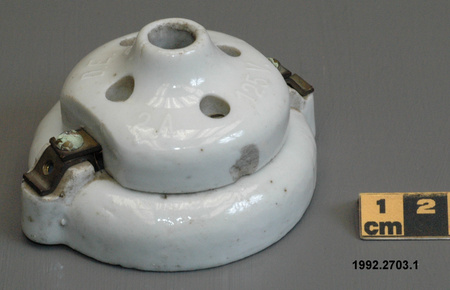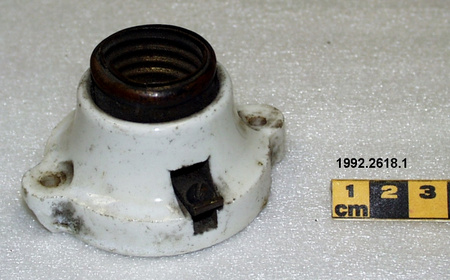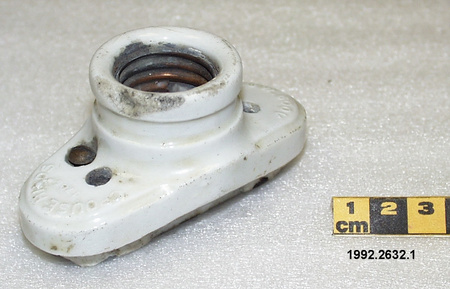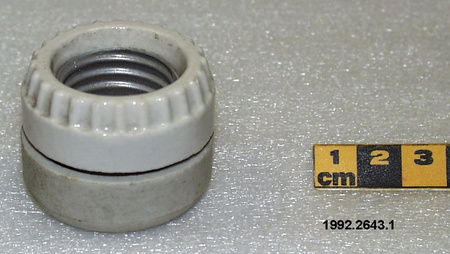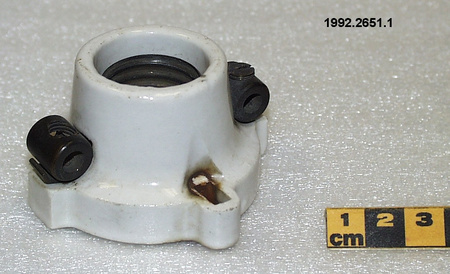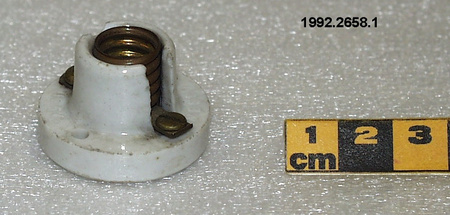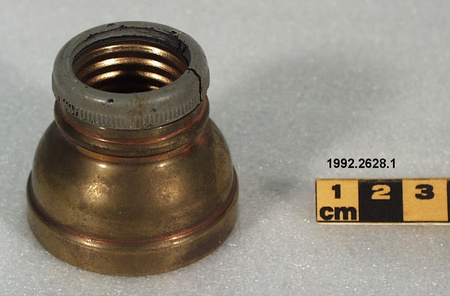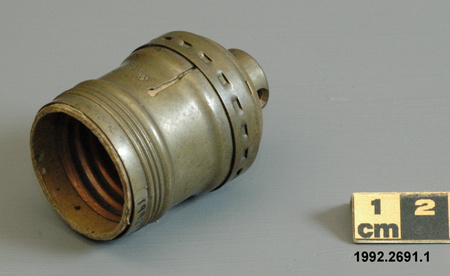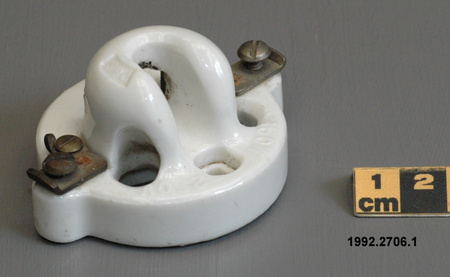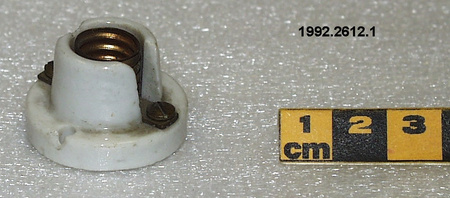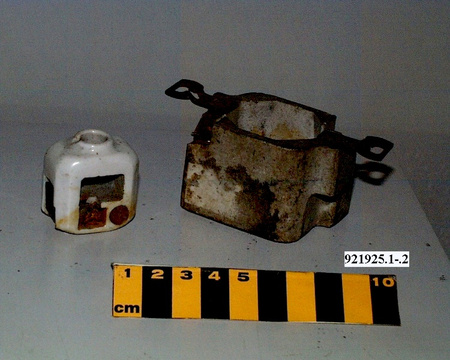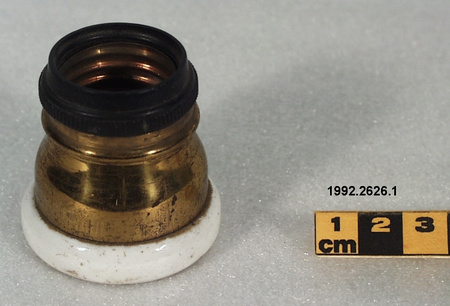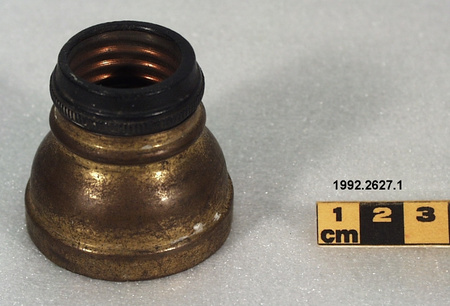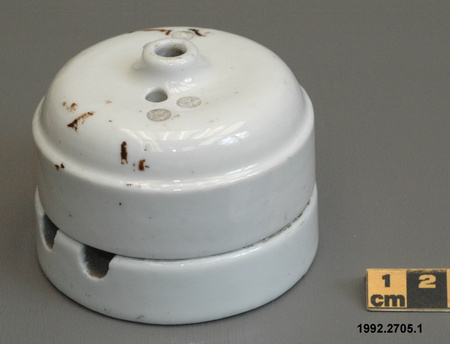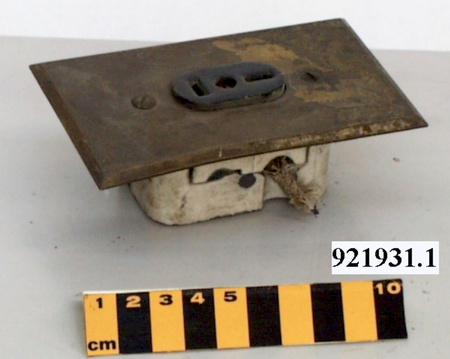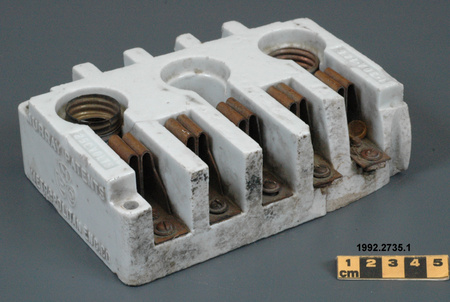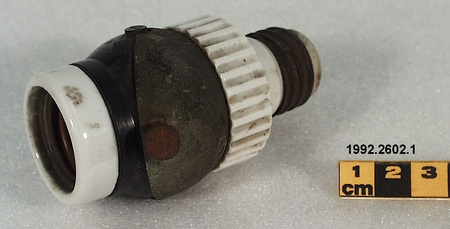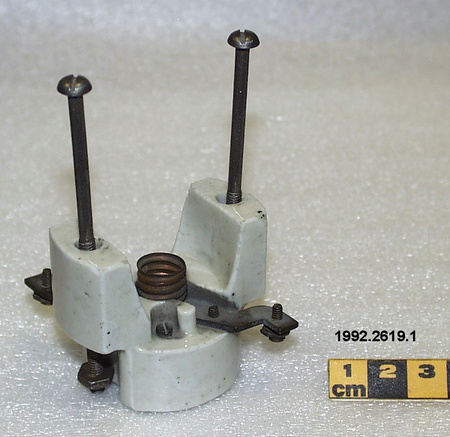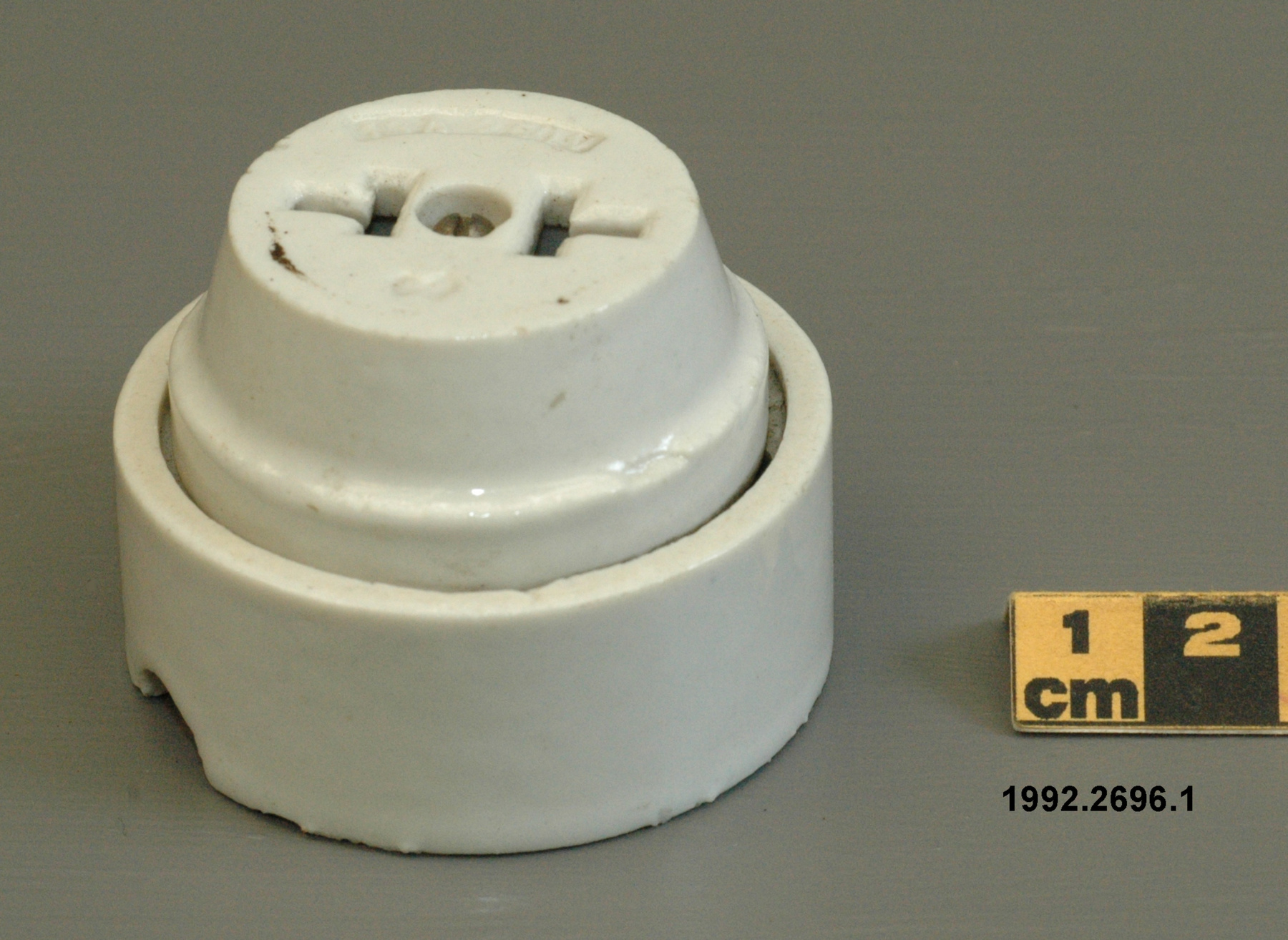Receptacle, electric
Use this image
Can I reuse this image without permission? Yes
Object images on the Ingenium Collection’s portal have the following Creative Commons license:
Copyright Ingenium / CC BY-NC-ND (Attribution-NonCommercial 4.0 International (CC BY-NC 4.0)
ATTRIBUTE THIS IMAGE
Ingenium,
1992.2696.001
Permalink:
Ingenium is releasing this image under the Creative Commons licensing framework, and encourages downloading and reuse for non-commercial purposes. Please acknowledge Ingenium and cite the artifact number.
DOWNLOAD IMAGEPURCHASE THIS IMAGE
This image is free for non-commercial use.
For commercial use, please consult our Reproduction Fees and contact us to purchase the image.
- OBJECT TYPE
- 2 prong/single/surface/T-slot
- DATE
- Unknown
- ARTIFACT NUMBER
- 1992.2696.001
- MANUFACTURER
- Smith & Stone
- MODEL
- P221
- LOCATION
- Unknown
More Information
General Information
- Serial #
- N/A
- Part Number
- 1
- Total Parts
- 1
- AKA
- N/A
- Patents
- N/A
- General Description
- porcelain shell/ brass/ wax
Dimensions
Note: These reflect the general size for storage and are not necessarily representative of the object's true dimensions.
- Length
- N/A
- Width
- N/A
- Height
- 3.9 cm
- Thickness
- N/A
- Weight
- N/A
- Diameter
- 5.5 cm
- Volume
- N/A
Lexicon
- Group
- Energy-electric
- Category
- User site
- Sub-Category
- N/A
Manufacturer
- AKA
- Smith Stone
- Country
- Unknown
- State/Province
- Unknown
- City
- Unknown
Context
- Country
- Canada
- State/Province
- Unknown
- Period
- Unknown
- Canada
-
An example of a Canadian or British made receptacle of a type used in Canada. Part of a large and varied collection of over 7500 electrical items acquired and documented by Ontario Hydro in the 1960s. The collection was thought to be the largest and most comprehensive of its kind in Canada. and was donated to the National Museum of Science and Technology in 1992. - Function
-
An electrical wiring device used to provide a point at which power can be drawn from a wiring system. - Technical
-
An example of a porcelain receptacle. According to Mellanby, porcelain bodies were first made around 1907. They were efficient but were easily broken in use and had a limited application in industrial or street use. According to Schroeder, in the pursuit of standardization of plugs and receptacles, the T-slot or (or duplex receptacle) was invented, which accepted tandem, parallel or polarized blades (introduced by Hubbell) (Refs. 2 & 3). - Area Notes
-
Unknown
Details
- Markings
- raised lettering on top reads "S S [logo]" & "10 A 250V"/ raised lettering on underside reads "P221"
- Missing
- appears complete
- Finish
- glazed white porcelain/ gold & metallic parts/ black wax
- Decoration
- N/A
CITE THIS OBJECT
If you choose to share our information about this collection object, please cite:
Smith & Stone, Receptacle, electric, Unknown Date, Artifact no. 1992.2696, Ingenium – Canada’s Museums of Science and Innovation, http://collection.ingenium.ca/en/id/1992.2696.001/
FEEDBACK
Submit a question or comment about this artifact.
More Like This




